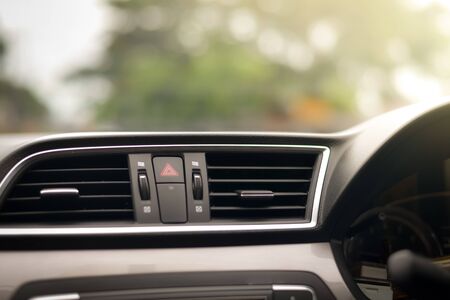1. Understanding the UK’s Second-Hand EV Market
The second-hand electric vehicle (EV) market in the UK has grown rapidly over recent years, making it an attractive option for first-time buyers keen to make the switch to cleaner driving without breaking the bank. As more drivers upgrade to newer models, a wider variety of pre-owned EVs are becoming available, from compact city cars like the Nissan Leaf and Renault Zoe, to family favourites such as the Kia e-Niro and Hyundai Kona Electric. Market trends show a steady increase in demand for used EVs, driven by improved battery technology and greater public charging infrastructure across towns and cities. Reliable listings can be found through established platforms such as Auto Trader, CarGurus, and Cazoo, as well as approved used programmes directly from manufacturers. It’s wise to check these sources for up-to-date prices, verified vehicle histories, and comprehensive photos before arranging a viewing. With more choice than ever before, understanding where to look and what’s available is your first step towards finding an electric car that fits both your lifestyle and budget.
2. Key Things to Check Before Buying
When considering your first second-hand EV purchase in the UK, it’s crucial to know what to look for to avoid costly mistakes and ensure your chosen car will serve your family well. Here are the essential checks every buyer should do:
Battery Health Reports
The battery is the heart of any electric vehicle, and its health directly impacts range and resale value. Most modern EVs keep detailed battery health records accessible through their onboard systems or via a main dealer. Ask the seller for an official battery health report, which shows current capacity compared to when new. Many manufacturers offer warranties on batteries (often eight years or 100,000 miles), so check if this still applies.
MOT History
As with all used cars in the UK, reviewing the MOT history is vital. You can easily check this online with the car’s registration number. Pay special attention to advisories and failures related to electrical systems, brakes, or suspension—these can hint at deeper issues specific to EVs.
Service Records
Even though EVs require less maintenance than petrol or diesel vehicles, regular servicing is still important. Look for a full service history, ideally from authorised service centres familiar with EVs. This helps confirm that software updates and safety recalls have been addressed.
Checklist: What to Inspect on a Used EV
| Check | Why It Matters |
|---|---|
| Battery Health Report | Determines battery condition and future performance |
| MOT History | Reveals past faults and potential recurring issues |
| Service Records | Shows care taken and confirms updates/recalls are done |
| Charging Cable & Port Condition | Avoids costly replacements or repairs |
Common UK-Specific Issues
Certain problems crop up more often in British EVs due to our climate and road conditions. Watch out for:
- Cable corrosion—especially in older models exposed to wet weather
- Heater performance—important for British winters; test before buying
- Tyre wear—EVs are heavier than traditional cars, so tyres may need replacing more often
Taking these precautions gives you peace of mind as you join the growing number of UK families making the switch to electric mobility.

3. Costs to Consider Beyond the Sticker Price
When buying a used electric vehicle (EV) in the UK, it’s important to look beyond the initial purchase price and factor in ongoing costs that could impact your budget. Here’s a practical breakdown of what you need to think about before making your decision.
Home Charging Installation
If you have off-street parking, installing a home charging point is one of the most convenient ways to keep your EV topped up. While government grants like the OZEV scheme can help with installation costs, expect to pay around £500–£1,000 after subsidies. Don’t forget to factor in any additional electrical work that might be needed for older properties.
Public Charging Rates
Unlike traditional fuel stations, public charging networks vary widely in pricing. Some supermarkets and shopping centres offer free charging, but rapid chargers on major routes can cost 60p per kWh or more. It’s wise to compare tariffs between providers like BP Pulse, Pod Point, and Instavolt, especially if you’ll rely on public chargers regularly.
Insurance Premiums
Insurance for EVs can be higher than for petrol or diesel cars, mainly due to the cost of specialist repairs and replacement batteries. However, shopping around pays off—many insurers now offer competitive rates for electric cars as they become more common on UK roads. Consider using comparison sites and check for policies tailored specifically to EV owners.
Vehicle Excise Duty (Road Tax) Exemptions
A big plus for EV drivers is exemption from Vehicle Excise Duty (VED), also known as road tax—at least until government policy changes in 2025. This can save you hundreds of pounds each year compared to conventional cars. Make sure to double-check the car’s registration date and emissions status, as some plug-in hybrids aren’t fully exempt.
Budgeting for Peace of Mind
Factoring in these ongoing costs will help ensure there are no nasty surprises after you bring your second-hand EV home. By planning ahead, you’ll have a better sense of the true cost of ownership—and more peace of mind as you embrace greener motoring in the UK.
Charging Infrastructure and Everyday Usability
One of the biggest considerations for families looking to buy a second-hand EV in the UK is the charging infrastructure. Unlike petrol stations, which are everywhere, public EV chargers can be patchy depending on where you live. Before making your purchase, it’s smart to check what charging options are available locally and how this fits into your daily routine.
Tips for Evaluating Local Charging Options
- Check Your Area: Use apps like Zap-Map or PlugShare to map out nearby public chargers, including rapid and standard points.
- Home Charging: If you have a driveway or garage, consider installing a home wallbox charger for convenience and lower overnight rates.
- Workplace Charging: Some employers offer charging at work – ask about this as it can make weekday routines much easier.
Accessibility and Reliability of Public Chargers
The reliability and accessibility of public chargers varies. It’s important to look beyond just the number of chargers and think about how often they’re available and whether they’re usually in working order. Below is a table comparing key factors to consider when evaluating different public charging networks in your area:
| Charger Location | No. of Points | Charger Type | Reported Uptime (%) | Payment Options |
|---|---|---|---|---|
| Supermarket Car Park | 4 | Fast (7kW) | 95% | App/Contactless Card |
| Motorway Services | 8 | Rapid (50kW+) | 90% | App/Contactless Card |
| Public Car Park (Town Centre) | 2 | Standard (3-7kW) | 85% | App/Membership Only |
How Charging Affects Daily Family Routines
- School Runs & Activities: Plan charging around regular trips – topping up during shopping or kids’ clubs can save time.
- Longer Journeys: For holidays or visiting relatives, check rapid charger locations along your route ahead of time to avoid stress.
- Busiest Times: Chargers can get busy on weekends or evenings, so having a home charger or reliable alternatives nearby is a real plus for family life.
A bit of planning goes a long way: understanding your local charging landscape will help ensure that an EV fits seamlessly into your daily family routine without unexpected surprises.
5. Government Incentives and Perks
If you’re considering your first electric vehicle (EV) purchase in the UK’s second-hand market, it’s wise to familiarise yourself with the government incentives and perks that can make EV ownership more affordable and convenient. While most new car grants like the Plug-in Car Grant have now ended for private buyers, there are still several benefits that apply to used EVs.
Low Emission Zone Advantages
One of the biggest draws for many UK drivers is the increasing number of Clean Air Zones (CAZ), Low Emission Zones (LEZ), and Ultra Low Emission Zones (ULEZ), especially in cities like London, Birmingham, and Glasgow. Electric cars, including those bought second-hand, are typically exempt from daily charges in these areas, helping you save money on commuting and trips into city centres.
Perks Like Free Parking and Reduced Charges
Some councils across the UK offer additional perks for EV owners, such as free or discounted parking in certain council-run car parks, or even residential permit discounts. In London, fully electric vehicles are eligible for a 100% discount on the Congestion Charge—a considerable saving if you drive in central London frequently. It’s worth checking your local authority’s website to see what benefits are available in your area.
Staying Up-To-Date with Grants and Schemes
While direct grants for buying used EVs are rare, there are still schemes to help with home charging installation, such as the EV Chargepoint Grant for flat owners or renters. These can ease the transition to an electric lifestyle. Always check official government sites or trusted motoring organisations for up-to-date information before making your purchase—policies and perks can change, and it pays to be informed so you don’t miss out on valuable savings.
6. Test Driving and Making the Final Decision
Before sealing the deal on your first second-hand EV, arranging a proper test drive is absolutely essential. Start by contacting the seller or dealership to book a slot that allows you enough time to get familiar with the car—ideally at least 30 minutes. When test driving on UK roads, pay close attention to how smoothly the EV accelerates and brakes, as well as how it handles typical British road conditions such as narrow lanes, roundabouts, and speed bumps. Make sure all in-car technology, including infotainment systems and charging ports, function correctly. Don’t forget to check for any unusual noises or warning lights on the dashboard. If possible, bring a family member along; their perspective can be invaluable. During the drive, try different speeds and settings, and see how regenerative braking feels in stop-start city traffic compared to faster A-roads. After the test drive, don’t be afraid to negotiate. Research average market prices beforehand so you know what’s reasonable for the model and age you’re considering. If you notice any minor issues, mention them respectfully—UK sellers are generally open to fair discussions. Ask about included extras like charging cables or warranty coverage, and always request a full service history. Take your time with the decision: buying an EV is an investment in your family’s future mobility, so make sure you feel comfortable and confident before signing on the dotted line.


